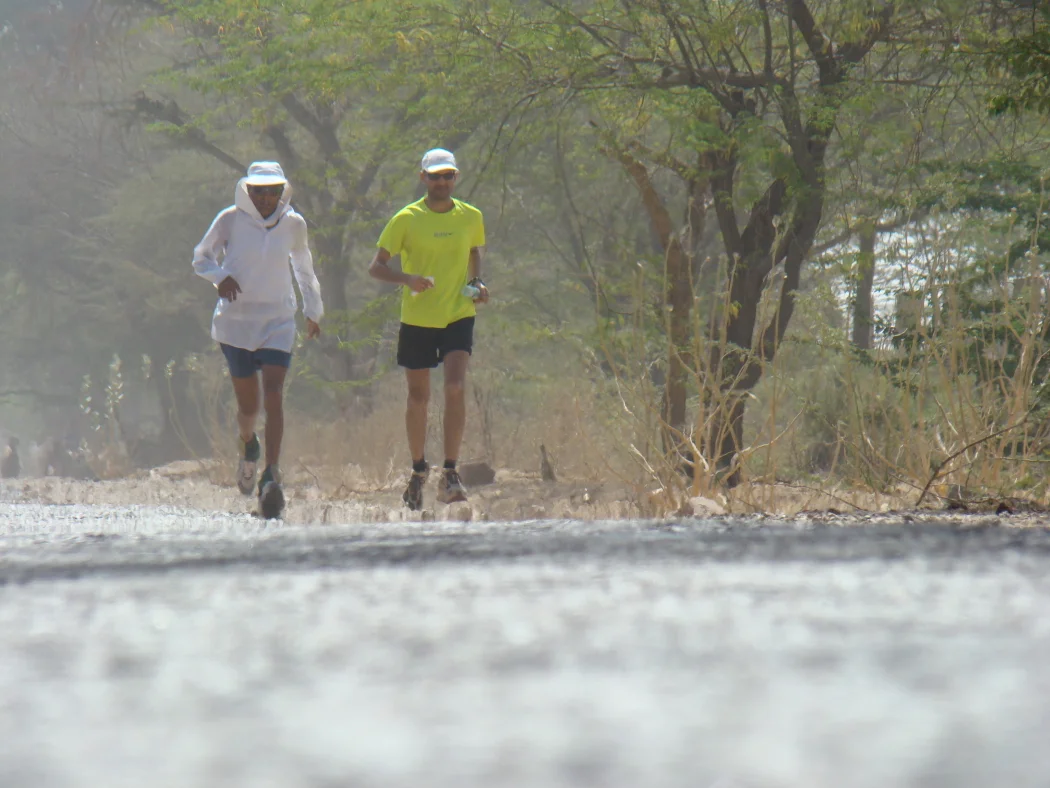Running and exercising in extreme hot conditions
Extended version of Run&Bee column in Hindustan Times
Running from Jodhpur to Jaisalmer in 2008, covering a marathon distance every day for 5 consecutive days. This was the first time I experienced hallucination while running, I saw some amazing dancing girls!
India is sweltering this summer and Delhi NCR just experienced the hottest day ever in the month of June (48C). These conditions of skyrocketing temperatures and the scorching sun pose significant challenges for us running enthusiasts. How can we even run let alone feel good in the heat of the summer?
Let’s understand what makes it difficult for us to run in high temperatures, and how we can make the best of the situation by taking the necessary precautions.
Humans are known to be great endurance animals because of our ability to sweat efficiently. As sweat evaporates from the surface of our skin, it tends to take the heat with it and enables our core temperature to reduce. But on a hot summer day, the sweat evaporates almost as quickly as it is produced and we dehydrate rather quickly. Combine that with starting a run slightly dehydrated already and our performance suffers and we feel fatigued even sooner. As we continue to run, and we become increasingly more dehydrated, our heart rate increases because our blood tends to become thicker as we lose more water.
As summers turn to monsoons and the humidity rises, our sweat evaporates less because of the higher water content in the air. And again we feel overheated and feel we have to slow down.
The dangers of running in the assaultive heat are real.
1. Muscle cramps in the calves, quads, and abs can occur while on the run or several hour later if you don’t rehydrate well in time.
2. Severe dehydration happens if you don’t consume liquids, both water and electrolytes. It can lead to dizziness, tiredness, and even mental disorientation (e.g., confusion, hallucinations)
3. Heat exhaustion includes symptoms like nausea, vomiting, headache, fainting, dizzy spells, and weakness.
4. Heat stroke occurs when heat exhaustion is left untreated. The body becomes hot to touch, and perspiration becomes non-existent, which in extreme cases can lead to organ failure and death.
We therefore need to understand how to run mindfully, keeping in sync with our environment.
1. Run early: Start before the sun rises, preferably by 5am to get some respite from the sun.
2. Adapt before you start the run with skipping or spot jogging. Slowly build up the pace rather than starting too fast.
3. Run by effort and not by pace. Your long run pace should be where you can talk in 10-15 word sentences. Focus on your heart rate more than on speed or distance.
4. Hydrate well, before, during, and after your run by drinking in sips, not in huge gulps and gallons, and alternate between plain water and electrolytes. In extreme heat please don't wait for the onset of thirst as that could be too late. Start having sips from early on, as early as the first 2 kms. The water should be cold but not freezing.
5. If you have an option, run on trails which will enable you to run in the shade, and also make you run a tad bit slower. Concrete and tar roads absorb heat and radiate it back to you as you run. Get onto the trails during the summer.
6. Pour water over your head and body even before you start the run and every few kilometres too to keep your body temperatures low.
7. Wear light colored, breathable, moisture wicking running gear and not cottons and dark colors. Wear a cap / hat to protect from the sun.
The bottom line is, training through the summers and monsoons takes a mindful approach that combines an understanding of why it is difficult to run in the heat, the timing, gear, and our own prep work in being safe, proactive, preventive, rather than being sorry for being foolhardy after the fact.


